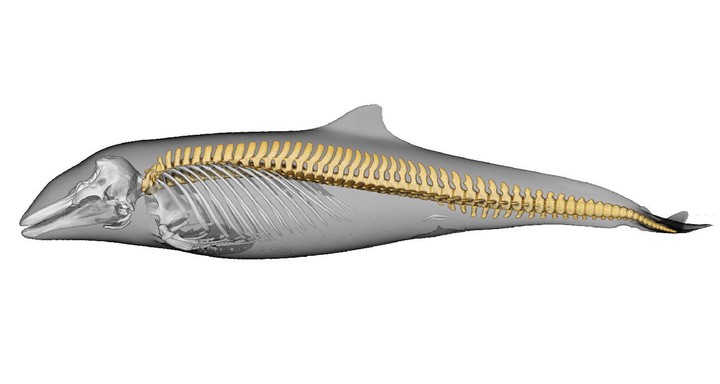New paper on vertebral shape convergence in dolphins and porpoises
 Harbor porpoise skeleton
Harbor porpoise skeleton
The second chapter of my PhD has been recently published in Journal of Mammalian Evolution !
During their evolutionary history, delphinoids (i.e., oceanic dolphins, porpoises, belugas and narwhals) experienced multiple independent transition between nearshore and offshore habitats. Here, we looked how these repeated ecological shifts impacted their vertebral shape at multiple taxonomic levels.
Linear morphometrics were collected on 37 out of 46 extant delphinoid species and analyzed using phylogenetic comparative methods.
We found that vertebral shape is highly correlated to habitat, resulting in morphological convergence. However, despite following the same general ecomorphological pattern, the two main delphinoid families, oceanic dolphins (Delphinidae) and porpoises (Phocoenidae), occupies different areas of the morphospace and have slightly different phenotypic trajectories along the nearshore-offshore gradient.
Besides interspecific habitat transitions, coastal and offshore ecotypes have also been described in several delphinoid species (i.e., common bottlenose dolphins, common dolphins, spotted dolphins, spinner dolphins, and narrow-ridge finless porpoises).
We then looked at the vertebral morphology in coastal and offshore common bottlenose dolphin ecotypes from the western North Atlantic Ocean.
Interestingly, vertebral shape also differed between ecotypes, following the same ecomorphological pattern as Delphinidae. This further support the hypothesis of incipient speciation between these two ecotypes and suggests continuity between evolutionary processes occurring below and above the species level.
Read more: https://doi.org/10.1007/s10914-022-09615-7